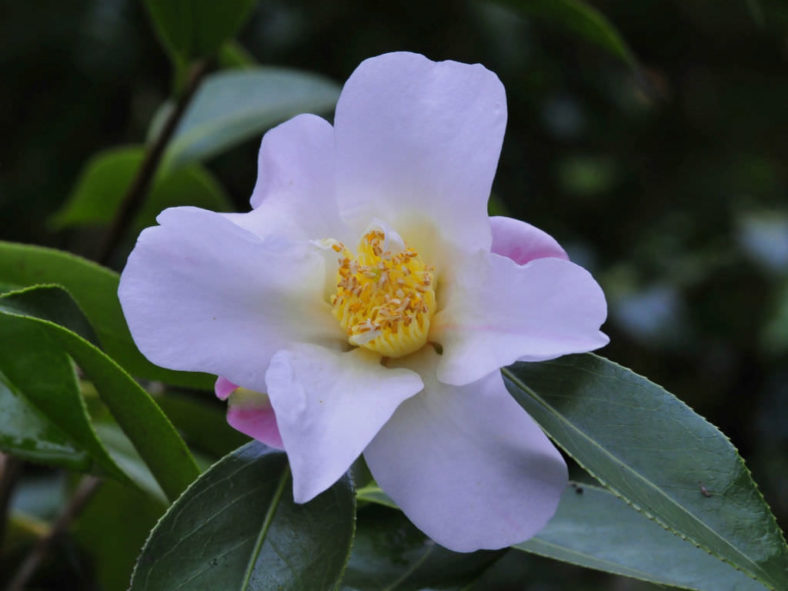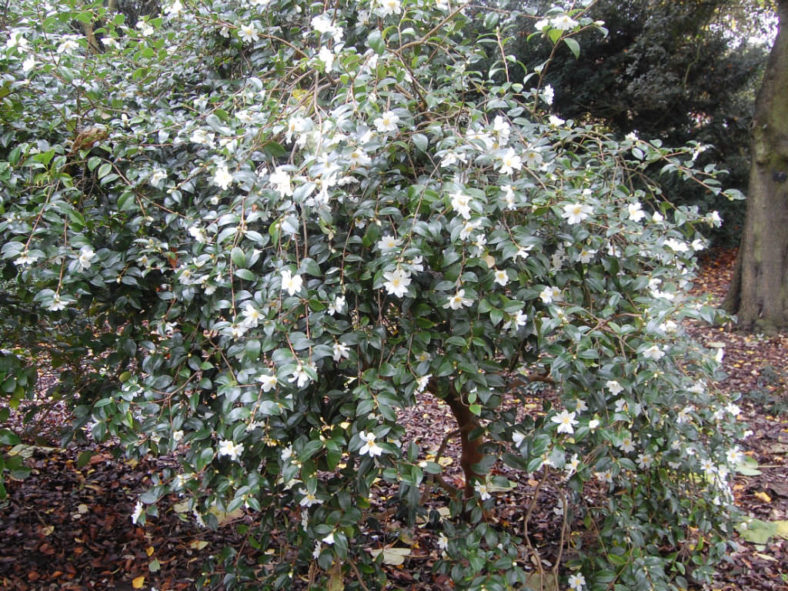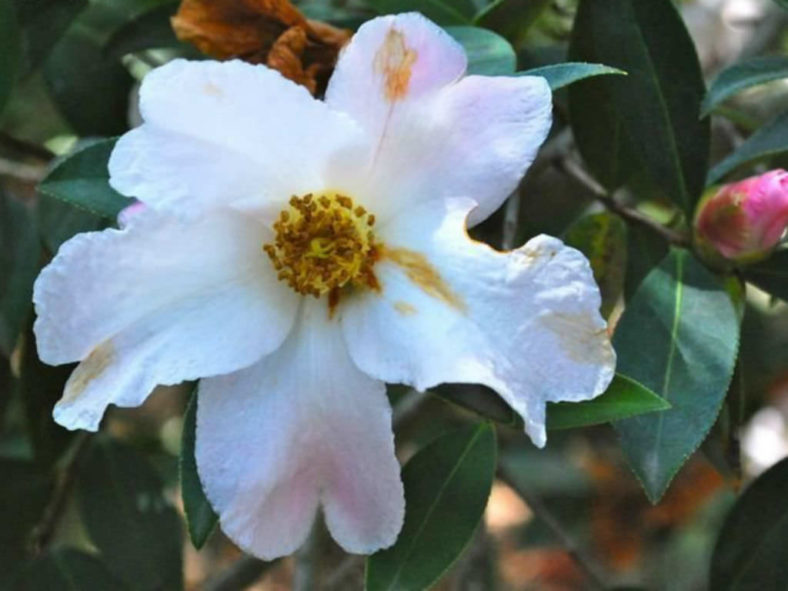Scientific Name
Camellia saluenensis Stapf ex Bean
Synonym(s)
Camellia glabriperulata, Camellia minor, Camellia pitardii var. lucidissima, Camellia tenuivalvis, Camellia weiningensis, Thea camellia var. lucidissima, Thea pitardii var. lucidissima
Scientific Classification
Family: Theaceae
Subfamily: Cactoideae
Tribe: Cacteae
Genus: Camellia
Origin
This species is native to South China.
Flower
Color: Rosy-pink to white
Bloom Time: Late winter to early spring
Description
Camellia saluenensis is a beautiful medium to large shrub that grows up to 10 feet (3 m) tall. Flowers are produced singly or in pairs over a long period. The petal color varies considerably from the rosy pink to white. The erect stamens are bright yellow with white filaments fused into a cup. Leaves are elliptic and pointed with small serrated margins that have minute dark tips.

Hardiness
USDA hardiness zone 8a to 11b: from 10 °F (−12.2 °C) to 50 °F (+10 °C).
How to Grow and Care
Choose a large rugged pot, terracotta, wood, or stone, and part fill with ericaceous compost, and then add your plant and backfill so that the pot's level is level with the soil. Water well, preferably with water taken from a water butt. If you use tap water, which tends to be alkaline, allow it to stand for a morning first.
Repot every other year into fresh potting compost. In the intervening years, remove the top 2 inches (5 cm) of compost and add fresh compost. You can repot back into the same pot if you trim off up to one-third of the roots to make room for fresh potting compost or go up into a larger pot. This regime will keep your Camellia happy.
Camellias are fast-growing tap-rotted plants, and the new growth can snap off in windy positions, so staking is advisable for the first few years until the Camellia becomes bushy. However, they tolerate windy conditions once established and are often used as windbreaks in gardens where they thrive.
See more at How to Grow and Care for Camellia.
Links
- Back to genus Camellia
- Plantpedia: Browse flowering plants by Scientific Name, Common Name, Genus, Family, USDA Hardiness Zone, or Origin
Photo Gallery
Click on a photo to see a larger version.




